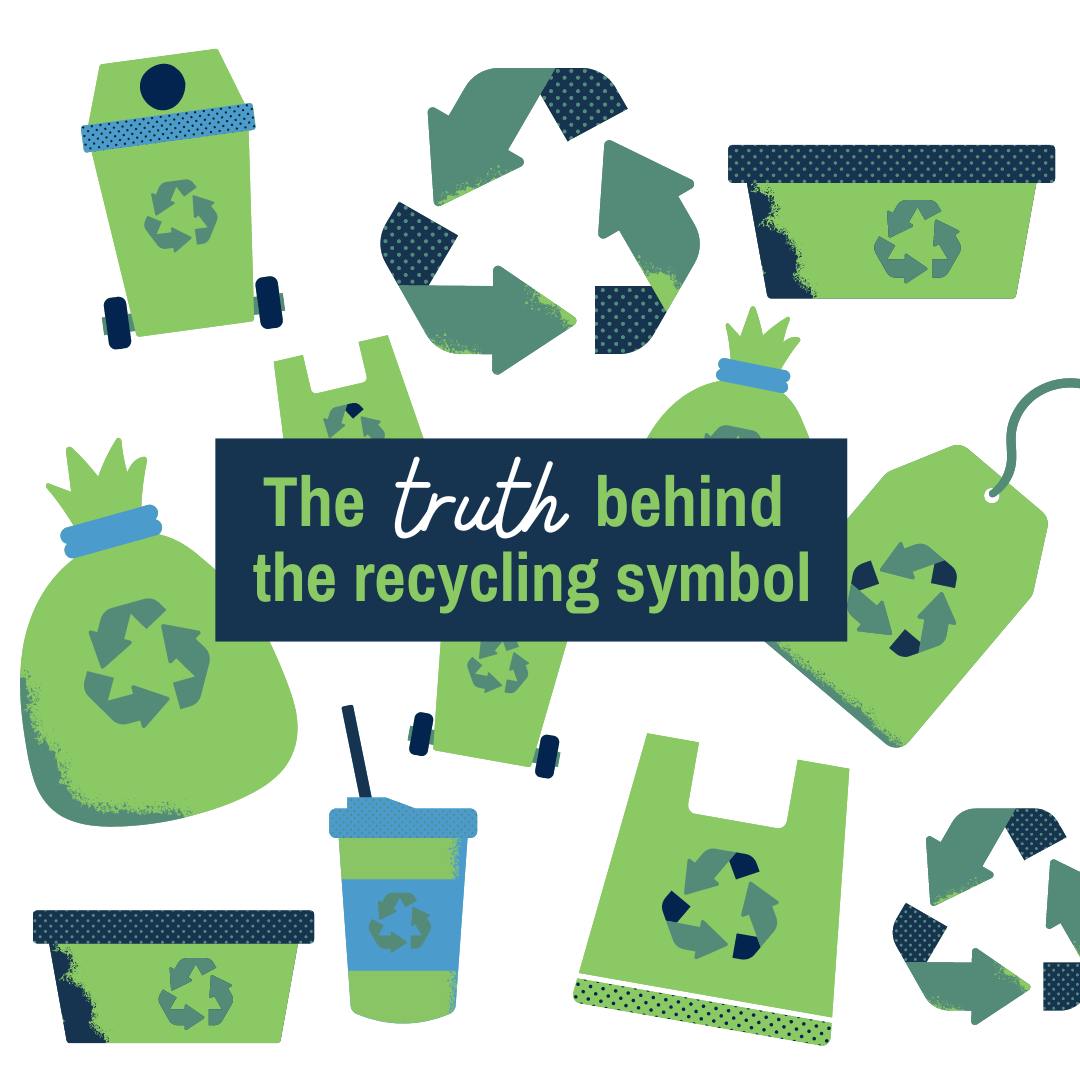
Waste Wizard
My Schedule
Schedule a Bulky Item pickup
Schedule an Appliance pickup
08/07/23 The Truth Behind the Recycling Symbol

A common question we're asked is, "Why does this product say it's recyclable on the packaging, but you don't accept it?" The answer is a bit more convoluted than you'd think...
The recycling symbol originated in 1970 and was designed by Gary Anderson, a senior at the University of Southern California. This was in response to the growing awareness of consumers and environmentalism, inspired by the inaugural Earth Day. What came after was exciting, but also confusing as there was a major lack of standardization across the nation. While the symbol is widely recognized, there has been little regulation as to what products are allowed to have the recycling symbol. Because of this, many items that have never been recyclable in Oregon still have the chasing arrows symbol and cause consumers to toss it in their recycling cart, only to find out later that their cart is contaminated, and we can't accept it as recycling.
Here is what is currently acceptable in your curbside recycling roll cart:
- Newspaper
- Corrugated Cardboard
- Scrap Paper
- Tin & Aluminum Cans
- Plastics Jugs #1 & #2
If an item has a recycle symbol on it and isn't an accepted item per our website, feel free to give our office a call (541-994-5555) or email info@northlincolnsanitary.com to see if there are other ways to recycle the item outside of your curbside recycling roll cart. As a reminder, we can recycle a number of items at our recycling center that aren't allowed curbside (including glass, scrap metal, tennis shoes, cooking oil, motor oil, paint, batteries, electronics, non-refrigerated appliances, and more!).
The good news is there is quite a bit coming down the pipeline legislatively in Oregon to help change this confusing symbol. Most notably, Senate Bill 123 (Digital Labeling for Recyclability) was just passed and is introducing producer responsibility organizations (manufacturers of products) to consider and develop recommendations for use of digital labeling to convey information about recyclability. Hooray!
Remember, the best sustainable practices are first reducing, then reusing, and lastly...recycling. Thanks for helping make our state a more sustainable place!
Recent Posts
- Safe & Efficient Collection
- We're Hiring!
- Lincoln City City Clean Up
- Depoe Bay City Clean Up
- Glass Recycling
- Home & Garden Show 2024
- Spring Celebration
- Earth Day Free Compost Giveaway
- School Tour
- 2024 Home & Garden Show
- Plastic Recycling by the Numbers
- True or False – Plastics Edition
- Yes, We Recycle That!
- Got Spoiled Food?
- Blood Drive
- Storm Debris
- Employee Spotlight: Renee Selvidge
